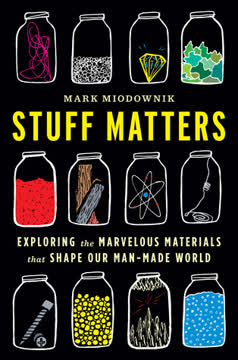Key Takeaways
1. Societies are defined by shared identity, not just cooperation
A society is a discrete group of individuals amounting to more than a simple family—more than one or both parents with a single brood of helpless offspring—whose shared identity sets them apart from other such groups and is sustained continuously across the generations.
Shared identity is key. Societies are not merely cooperative groups, but entities bound by a common sense of belonging. This shared identity:
- Transcends immediate family ties
- Persists across generations
- Distinguishes members from outsiders
While cooperation is often present, it's not the defining feature. Societies can include:
- Internal conflicts and competition
- Varied levels of individual contribution
- Complex social hierarchies and roles
The strength of this shared identity allows societies to:
- Maintain cohesion despite internal differences
- Mobilize collective action when needed
- Persist through changes in leadership or circumstances
2. Anonymous societies enable human civilization's scale
Humans follow the same approach: our species is attuned to markers that reflect what each society finds acceptable, including behaviors so subtle they may only be noticed subliminally. By this means people can connect with strangers in what I call an anonymous society, thereby breaking the glass ceiling in the size societies can achieve.
Markers enable large-scale societies. Unlike other primates, humans can form vast societies where most members are strangers to each other. This is possible through:
- Shared markers of identity (e.g., language, customs, symbols)
- Subliminal recognition of these markers
- Ability to trust and cooperate with unknown members
This capacity for anonymous societies has profound implications:
- Allows for complex civilizations and nation-states
- Enables specialization and division of labor
- Facilitates trade and cultural exchange on a grand scale
However, it also presents challenges:
- Potential for manipulation of identity markers
- Difficulty in maintaining cohesion across diverse populations
- Risk of dehumanizing outgroups
3. Hunter-gatherer societies balanced nomadism and settlement
Even though their societies were a step larger than those of other vertebrates, on a daily basis people carried on their lives among just the few in their band. That made each band equivalent to a close-knit neighborhood, even if a mobile one.
Flexibility in social organization. Hunter-gatherer societies demonstrated a remarkable balance between:
- Small, intimate bands for daily life
- Larger, interconnected societies for broader identity and resources
This dual structure allowed for:
- Strong interpersonal bonds within bands
- Access to wider resources and mate pools across the society
- Adaptability to environmental changes
Key features of hunter-gatherer social organization:
- Fission-fusion dynamics (flexible group size and composition)
- Egalitarian decision-making within bands
- Shared cultural markers across the broader society
- Periodic gatherings to reinforce societal bonds
This flexible structure laid the groundwork for more complex social organizations that would emerge with agriculture and urbanization.
4. Markers of identity shape social perception and behavior
We are disposed to discount the differences between individuals and to perceive the members of other societies—and to a lesser extent those of our own—as both similar and forming a unified whole.
Identity markers powerfully influence perception. Humans have evolved to quickly categorize others based on markers of group identity, leading to:
- Rapid, often subconscious judgments about others
- Tendency to see outgroups as more homogeneous than they are
- Strong emotional responses to symbols of identity
This psychological tendency has significant consequences:
- Facilitates in-group cooperation and cohesion
- Can lead to prejudice, stereotyping, and intergroup conflict
- Shapes political and social behavior on a societal scale
Key aspects of identity-based perception:
- Develops early in childhood
- Influenced by both innate predispositions and cultural learning
- Can be moderated by conscious effort and exposure to diversity
Understanding these psychological processes is crucial for addressing intergroup tensions and promoting social harmony in diverse societies.
5. Societies naturally form, evolve, and dissolve over time
Societies, then, staked out as different from each other by the identities of the members, rest on more than personal networks of allies. And unlike other species, humans keep social life functioning and social networks strong with rules administered in a host of formulations from one society to the next.
Societies are dynamic entities. Like living organisms, societies go through lifecycles of:
- Formation (often through division of existing societies)
- Growth and evolution
- Potential dissolution or transformation
Key factors in societal evolution:
- Changes in shared markers of identity
- Environmental and resource pressures
- Internal conflicts and power dynamics
- Interactions with other societies
The process of societal change is often gradual, but can accelerate during:
- Technological innovations
- Major cultural shifts
- Environmental crises
- Conflicts with other societies
Understanding this natural lifecycle can help in:
- Anticipating and managing societal changes
- Preserving cultural heritage during transitions
- Fostering resilience in the face of challenges
6. Intergroup dynamics range from conflict to collaboration
Human societies can accomplish a greater payoff by working together rather than against each other, mitigating any competition over resources, a feat that other animals seldom achieve.
Cooperation and conflict coexist. While intergroup conflict is common in human history, our species has a unique capacity for large-scale cooperation between societies. This manifests in:
- Trade and economic partnerships
- Cultural exchange and shared innovations
- Political alliances and international organizations
Factors influencing intergroup dynamics:
- Perceived similarities and differences in identity
- Competition for resources
- Mutual threats or opportunities
- Historical relationships and grievances
The balance between conflict and cooperation is shaped by:
- Leadership and governance structures
- Economic systems and resource distribution
- Cultural values and beliefs
- Communication and information exchange
Understanding and managing these dynamics is crucial for:
- Promoting peace and stability
- Addressing global challenges (e.g., climate change, pandemics)
- Fostering sustainable development and prosperity
7. Modern societies face unique challenges in maintaining cohesion
Modern life challenges our tolerance for others by twisting and stretching our identities in novel ways. But societies have remained with us throughout it all.
Navigating complexity in diverse societies. Modern societies face unprecedented challenges in maintaining cohesion due to:
- Rapid technological change
- Increased global interconnectedness
- Growing diversity within populations
- Complex, abstract economic and political systems
Key challenges include:
- Balancing individual freedoms with collective identity
- Integrating diverse cultures and value systems
- Addressing economic inequalities and social divisions
- Maintaining trust in institutions and shared narratives
Potential strategies for fostering cohesion:
- Promoting inclusive definitions of national identity
- Developing shared civic values and practices
- Encouraging cross-cultural understanding and empathy
- Creating equitable economic and educational opportunities
The future of human societies depends on our ability to adapt our social instincts and institutions to these new realities, leveraging our capacity for cooperation while managing the risks of conflict and fragmentation.
Last updated:
Review Summary
The Human Swarm explores human societies through the lens of biology, comparing them to animal societies, especially ants. Moffett examines how humans form large, anonymous societies using identity markers. The book covers topics like tribalism, racism, and nationalism. Readers found it insightful and thought-provoking, praising its cross-disciplinary approach and big ideas. However, some felt it was repetitive or difficult to follow. Overall, it offers a unique perspective on human social behavior, though opinions varied on its effectiveness and readability.
Similar Books









Download PDF
Download EPUB
.epub digital book format is ideal for reading ebooks on phones, tablets, and e-readers.




